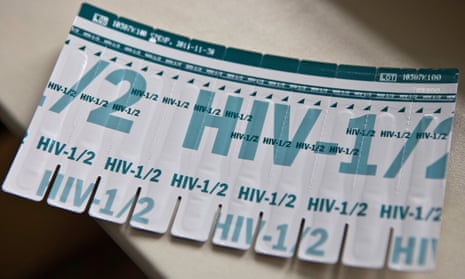Less than half of young women with HIV in seven southern and east African countries are aware they are infected, according to a wide-ranging study.
The incidence of HIV infection among 15- to 24-year-old women in Lesotho, Malawi, Swaziland, Uganda, Tanzania, Zambia and Zimbabwe is currently around 3.6% – some 1.5 million young and adolescent women – with an infection rate almost double that of their male counterparts.
Only 46.3% of those infected were aware that they had the disease, and only 45% of those with the infection were receiving treatment and virally suppressed.
The two-year survey, published by the US Center for Disease Control’s Morbidity and Mortality Weekly, has flagged up the severe shortfalls in reaching the UNAids targets for young women and adolescents in sub-Saharan Africa that set out to ensure that by 2020, 90% of HIV-infected people would be aware of their status; with another 90% of that total receiving anti-retroviral treatment, and 90% of those virally suppressed.
The researchers interviewed more than 28,000 young women under the auspices of surveys funded by the US president’s emergency plan for Aids relief; they conducted interviews and took plasma specimens to evaluate infection.
Although the research suggested that young women who were aware they were HIV positive and undergoing treatment meant they were close to the UNAids targets, it also flagged up a large group who claimed to be unaware of their infection.
The result is that just 45% of young women in the seven countries are virally suppressed, well short of UNAids target.
The authors are positive about the success in reaching young women who are aware they are infected with HIV, but the figures are particularly worrying as this group currently accounts for a disproportionate number of new HIV infections. Research suggests that young women in east and southern Africa risk being infected with HIV some five to seven years earlier than their male peers.
Previous work in the area has outlined lack of access to continuing education, an imbalance in gender relations and lack of specific education on HIV as being significant contributors to the spread of the disease, even amid moves to control it.
A study in Tanzania between 2003 and 2012 found HIV testing was also more likely among young women who were married than young women who were not.
Commenting on their results, the authors of the new research said: “There is a need to design, implement, and evaluate strategies aimed at ensuring HIV-positive adolescent girls and young women know their HIV status and are on [antiretroviral] treatment to improve their immunity status and reduce transmission to others.”
